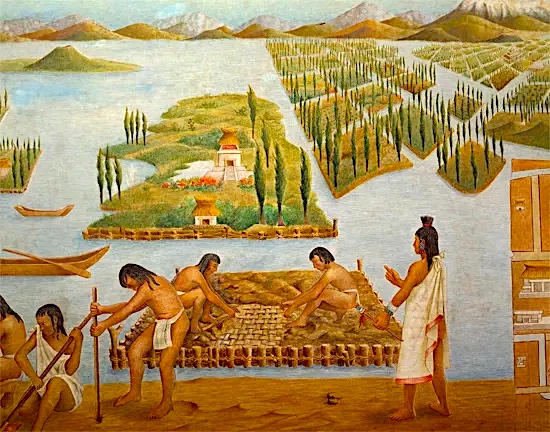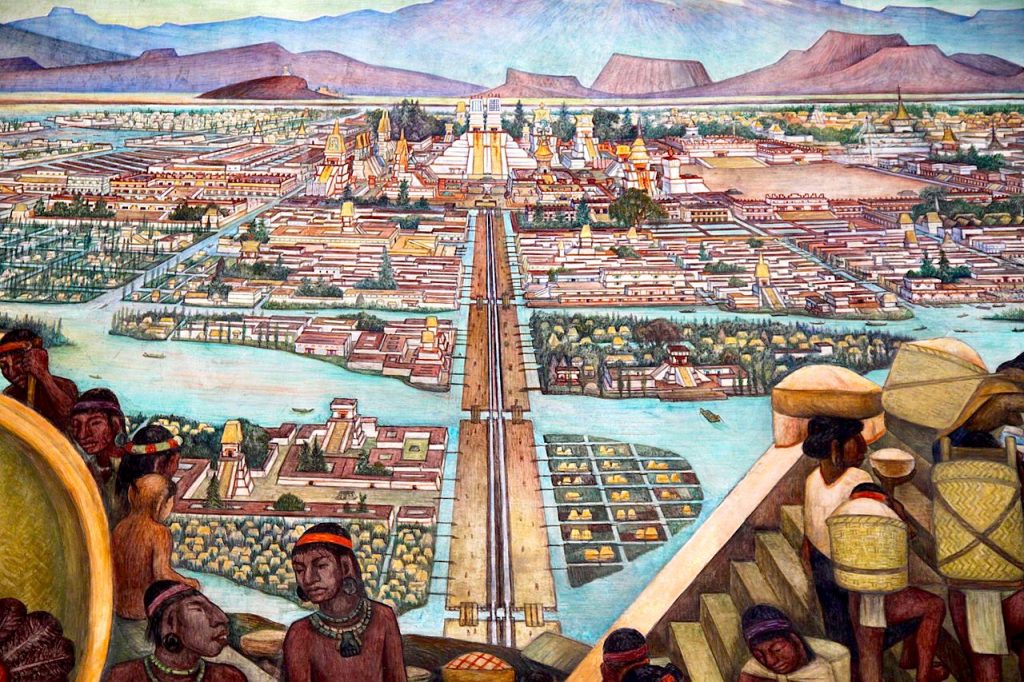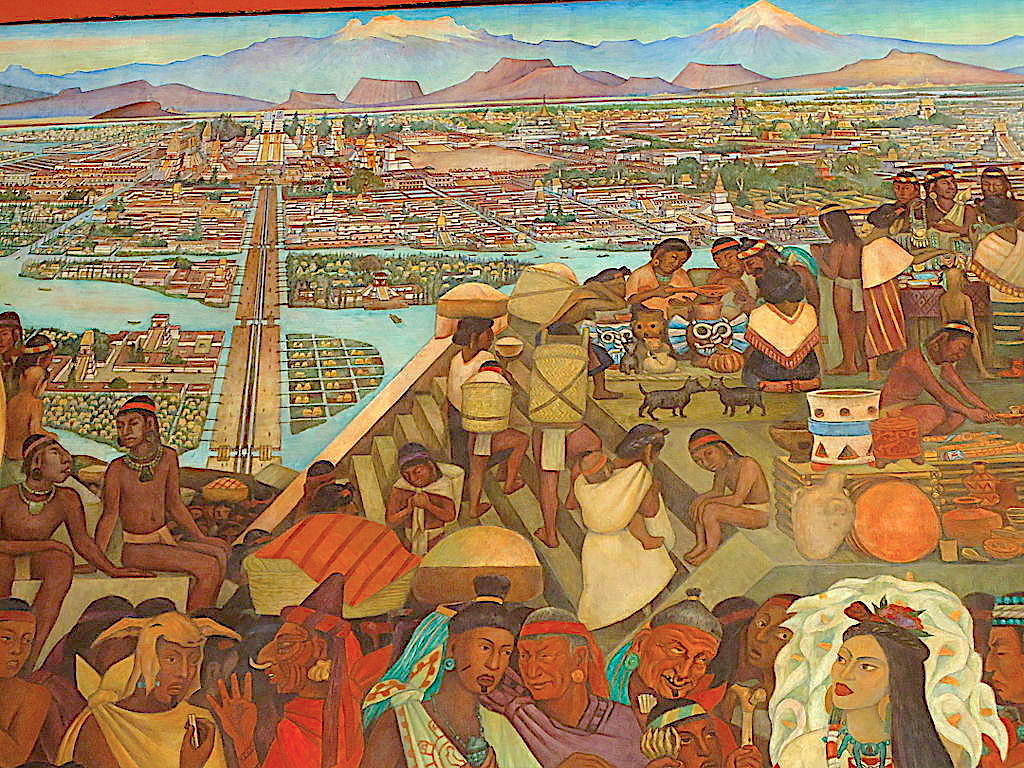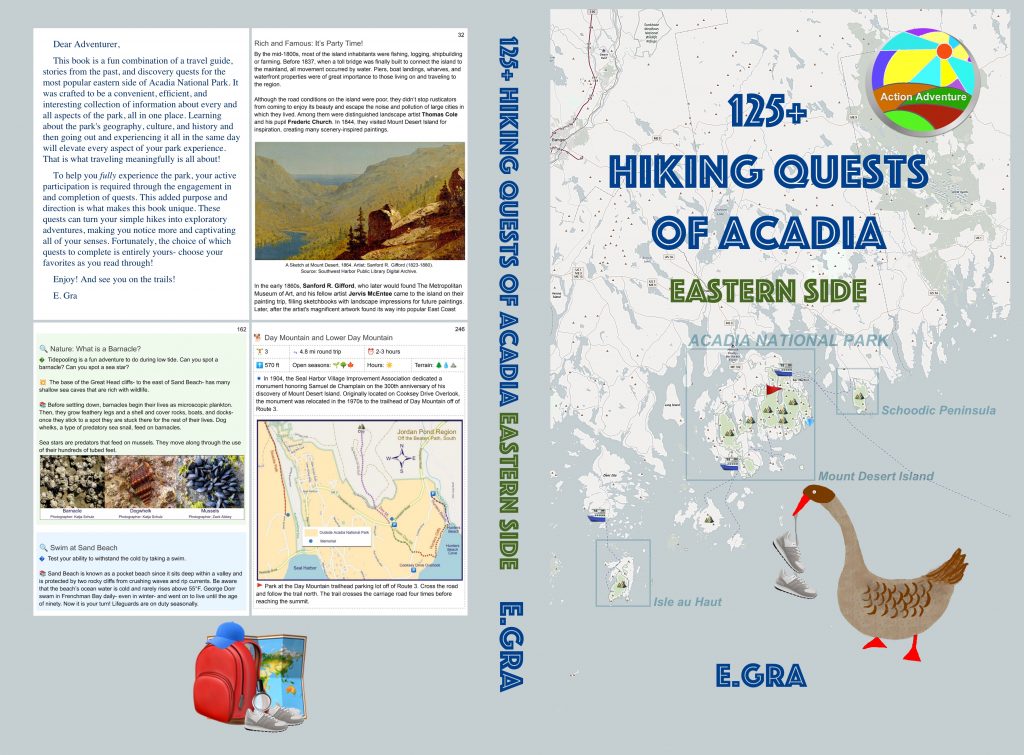Let’s play! Today will will explore who the Aztec were and how, in 1325, they founded a city in a most unusual place that, by 1500, became one of the largest and most beautiful city in the world.
| If you find my work worthwhile, drop me a few 🪙🪙🪙 It will allow me to keep writing content like this! |
As you probably remember from my last post about the pilgrimage, that it took Aztec roughly 50 years after their arrival into the Valley of Mexico, to settle. It is possible, that the tribes controlling the valley, were not excited about sharing the land with new arrivals. That might explain why the only available lands were the islands. However dim the Aztec situation looked at the time, the not-so-desirable location turned out to be a blessing.
The first rule of survival is sustainable food production. Aztec caught fish and duck, but the island wasn’t big enough to support agriculture of corn, beans, amaranth, squash, chili or chia. They had to figure out how to grow food on water. And they did! Could it be due to their fish-rich diet?
Aztec came up with an idea of floating gardens. First, you weave a mat out of reeds, which are plenty, then you anchor the mat with a fresh tree branch from a willow tree, which are plenty, to prevent the mat from drifting away, and, last, you scoop mud from the bottom of the lake, thanks for the shallow lake Texcoco, onto the mat and plant seeds in it.

© Gianni Dagli Orti—De Agostini Editore/age fotostock
This technique ended up to be revolutionary, giving many advantages over growing on land. The first one Aztec experienced right away. With the mats floating on top of the water, you never have to water the plants, as their roots are always within water reach. This along removed dependance on rain, allowing the farmers to collect very high crop yields with up to four crops a year. Aztec never had to experience soil depletion as many different plants shared the same lake water that served as a good fertilizer. But wait, there is more! With time even willow tree branches that were holding the mats took root, turning the floating gardens into the floating islands. That is when Aztec realized that they could shape the land in any way they desired. It must felt pure magic to them.
Quest #1: Visits the World Heritage Site of Xochimilco. This network of canals is part of a 400-acre ecological park what remains of the lake, boats, and floating gardens of the ancient Tenochtitlán. Xochimilco's farms still farm the old way.
With food crisis avoided and new technique to “grow” the land, Aztec set about building their city. It was a matter of time when Aztec became the wealthiest tribe in the valley with lots of time on their hands for building what would become the largest and most beautiful city in the world.

Via Wikipedia Commons
The city was thoughtfully built with a symmetry. All constructions had to be approved by the city planning committee.
Three wide causeways or raised roads connected the island to the mainland in the north, south, and west directions. For strategical purposes (Aztecs already made enemies, remember the last post?) the causeways were interrupted by bridges (simple wood planks, really) that were removed at night. The bridges also allowed canoes to pass freely.
Two aqueducts were built, each more than 4 km (2.5 mi) long, to provided the city with fresh water from Chapultepec water spring.

Wojciech Kocot (photo) via Wikipedia Commons
The city had about 45 public buildings, temples, and palaces. The largest ceremonial center was at the Great Temple, dedicated to the gods of war and rain. There were also the temple of the Serpent, the Sun Temple and some minor temples, a ball game court, a platform for the gladiatorial sacrifice, a zoo, a botanical garden, schools, museums, public parks, a library, markets. Willow trees that anchored the island and more trees planted on top of buildings, provided great protection from sun, creating a microclimate of a lush and cool oasis.

Kgv88 (photo) via Wikipedia Commons
In 1519, when Spanish Conquistadors saw Tenochtitlán for the first time, the city struck awe with them. Here is how it is described by one of the solder under Cortes command.
“… we were amazed and said that it was like the enchantments… on account of the great towers and cues and buildings rising from the water, and all built of masonry. And some of our soldiers even asked whether the things that we saw were not a dream?…
Bernal Díaz del Castillo, The Conquest of New Spain
Quest #2: The last Aztec emperor Montezuma II 's Palace stood where is now the National Palace (Free). Visit the building in search for Diego Rivera Murals (painted between 1929 and 1951). Can you find the one of the Great Tenochtitlán?
Besides being the most unusual city in the world, it was also one of the largest, with estimation of more than 250 thousand inhabitants in 1519, and the population of the Valley of Mexico is estimated to be about one million. In comparison, at that time London had population of 50 thousand inhabitants, Paris – 185 thousands, Constantinople – 200 thousands, Beijing – 672 thousands. Today, after 500 years of challenging history, Mexico City again is among the largest. In 2020, Greater Mexico City was rated the 6th largest metropolitan area in the world.
Do you like my posts? What until you see my quests! If you ever decide to visit Acadia National Park, check out my book available on Amazon as paperback and Kindle editions. Buy a book, change a life! Thank you for your support and patronage.

Copyright © 2022 by E.Gra. Unless otherwise noted, all rights reserved. Unless otherwise indicated, no part of this work may be reproduced, or transmitted in any form or by any means without the author’s prior written consent.
